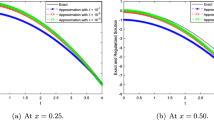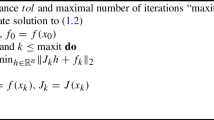Abstract
A new dynamic technique for the measurement of thermal conductivity at high temperatures has been developed at the IMGC. The specimen is brought to high temperatures with a current pulse; during cooling the heat content is dissipated by radiation and by conduction. The differential equation describing this process contains terms related to the heat capacity, the hemispherical total emittance, and the thermal conductivity of the material. If the first two properties are determined using the same specimen during subsecond pulse heating experiments, thermal conductivity may be evaluated by accurate measurements of the round-shaped temperature profiles established on the specimen during cooling. High-speed scanning pyrometry makes possible accurate measurements of temperatures and of temperature derivatives (with respect to space and time), which enables the differential equation describing the power balance at each point of the specimen to be transformed into a linear equation of the unknown thermal conductivity. A large overdetermined system of linear equations is solved by least-squares techniques to obtain thermal conductivity as a function of temperature. The theory underlying the technique is outlined, the experimental apparatus is described, and details of the measurement technique are given.
Similar content being viewed by others
References
A. Cezairliyan,J. Res. Natl. Bur. Stand. (U.S.) 75A:565 (1971).
F. Righini, A. Rosso, and G. Ruffino,High Temp. High Press. 4:597 (1972).
F. Righini and A. Rosso,Measurement 1:79 (1983).
A. P. Miiller and A. Cezairliyan,Int. J. Thermophys. 3:259 (1982).
F. Righini, R. B. Roberts, A. Rosso, and P. C. Cresto,High Temp. High Press. 18:561 (1986).
D. R. Flynn, inThermal Conductivity, Vol. 1, R. P. Tye, ed. (Academic Press, New York, 1969), pp. 241–300.
R. E. Taylor,High Temp. High Press. 4:523 (1972).
R. E. Taylor, inCompendium of Thermophysical Property Measurement Methods, Vol. 1, K. D. Maglic, A. Cezairliyan, and V. E. Peletskii, eds. (Plenum, New York, 1984), pp. 125–167.
F. Righini, A. Rosso, and A. Cibrario,High Temp. High Press. 17:153 (1985).
R. E. Taylor, inThermal Conductivity 15, V. V. Mirkovich, ed. (Plenum, New York, 1978), pp. 177–186.
F. Righini, R. B. Roberts, and A. Rosso,Int. J. Thermophys. 6:681 (1985).
F. Righini, R. B. Roberts, and A. Rosso,High Temp. High Press. 18:573 (1986).
Author information
Authors and Affiliations
Rights and permissions
About this article
Cite this article
Righini, F., Bussolino, G.C., Rosso, A. et al. Thermal conductivity by a pulse-heating method: Theory and experimental apparatus. Int J Thermophys 11, 629–641 (1990). https://doi.org/10.1007/BF01184333
Issue Date:
DOI: https://doi.org/10.1007/BF01184333




